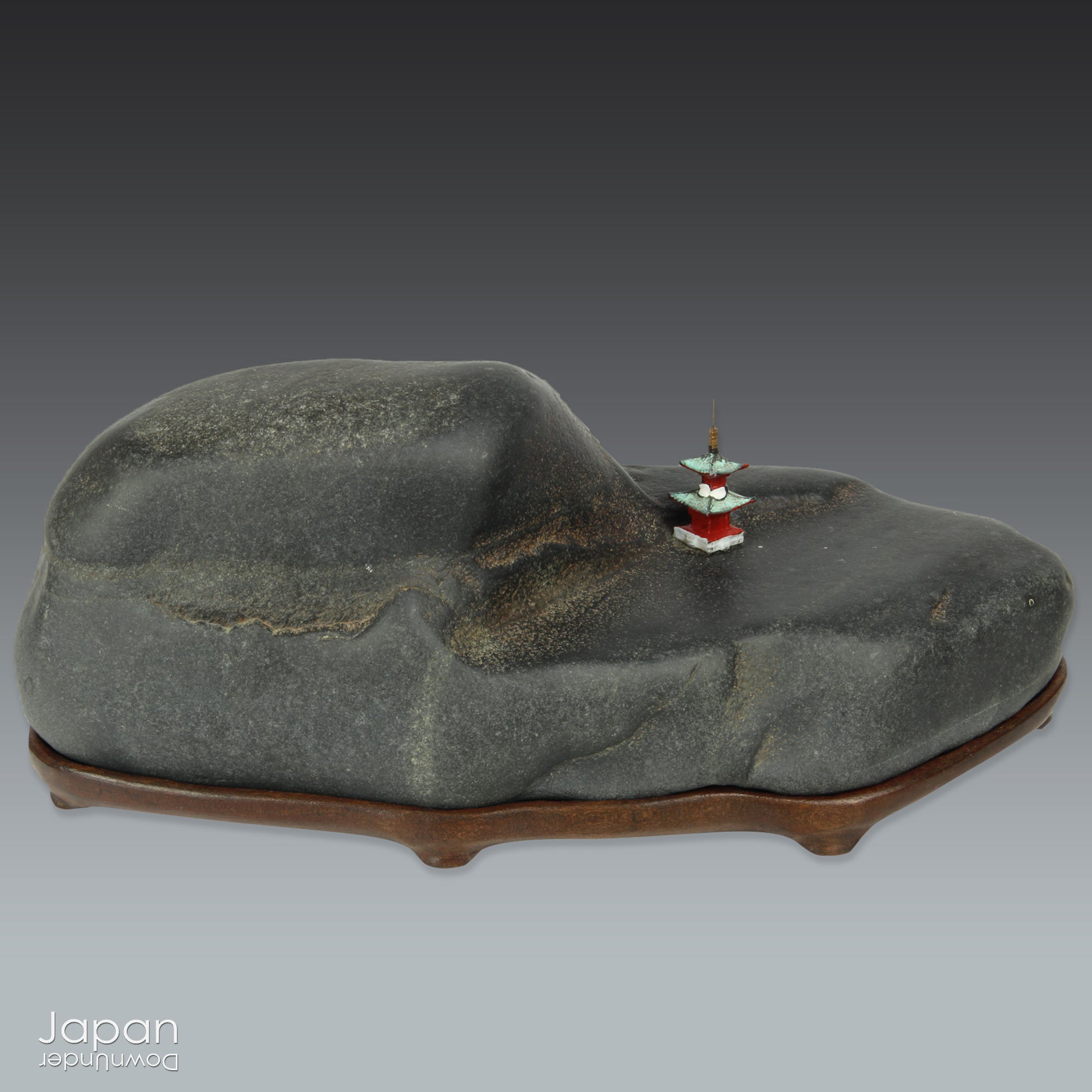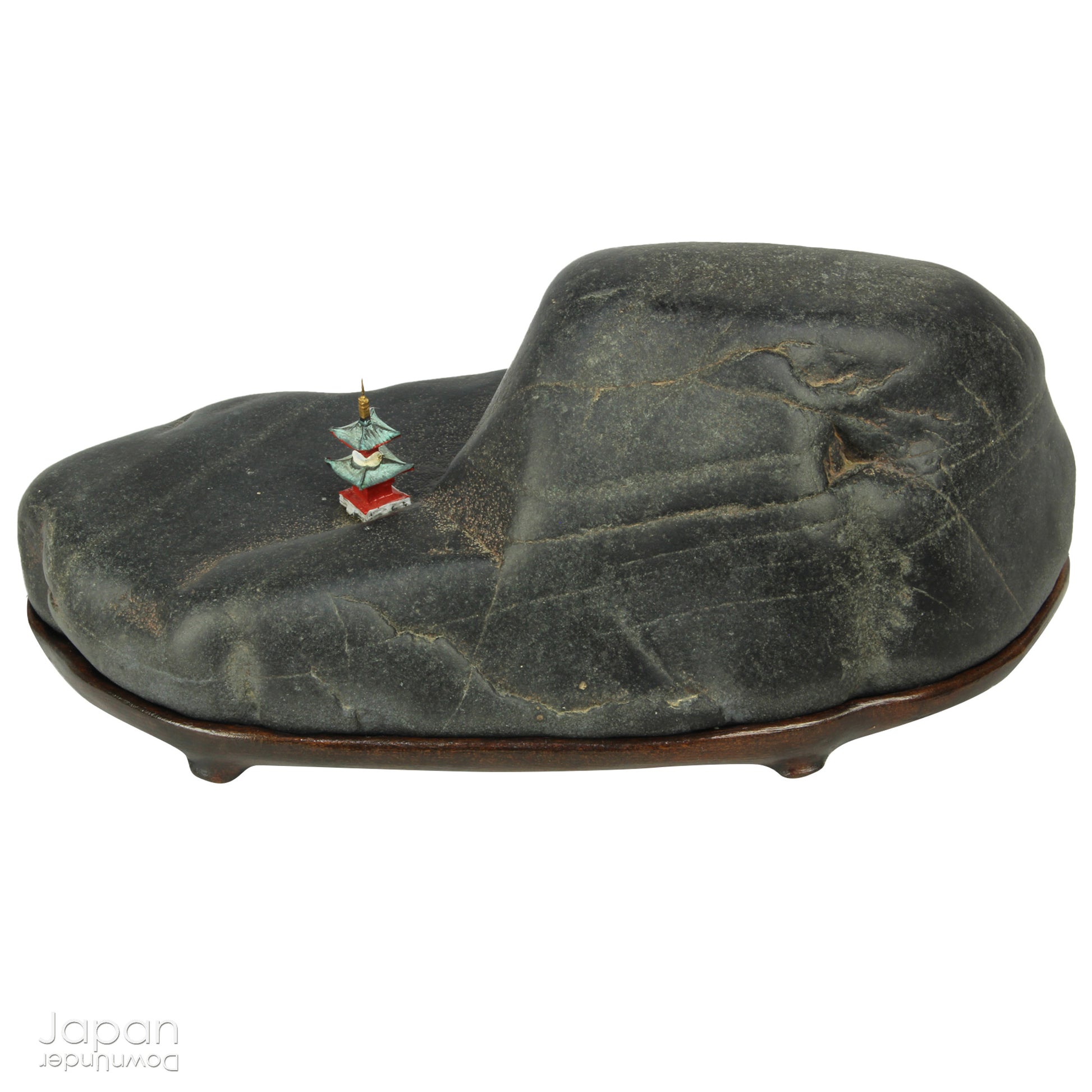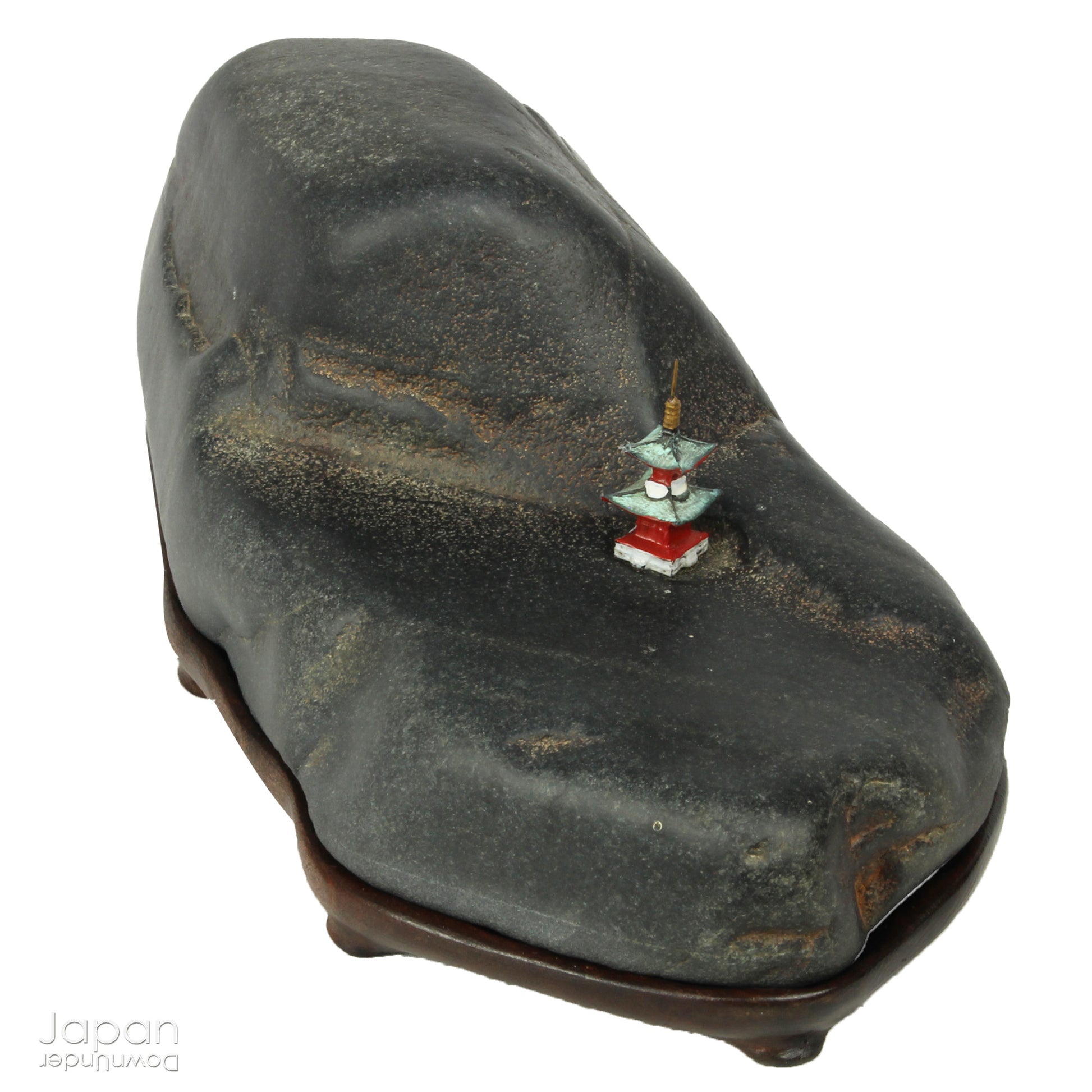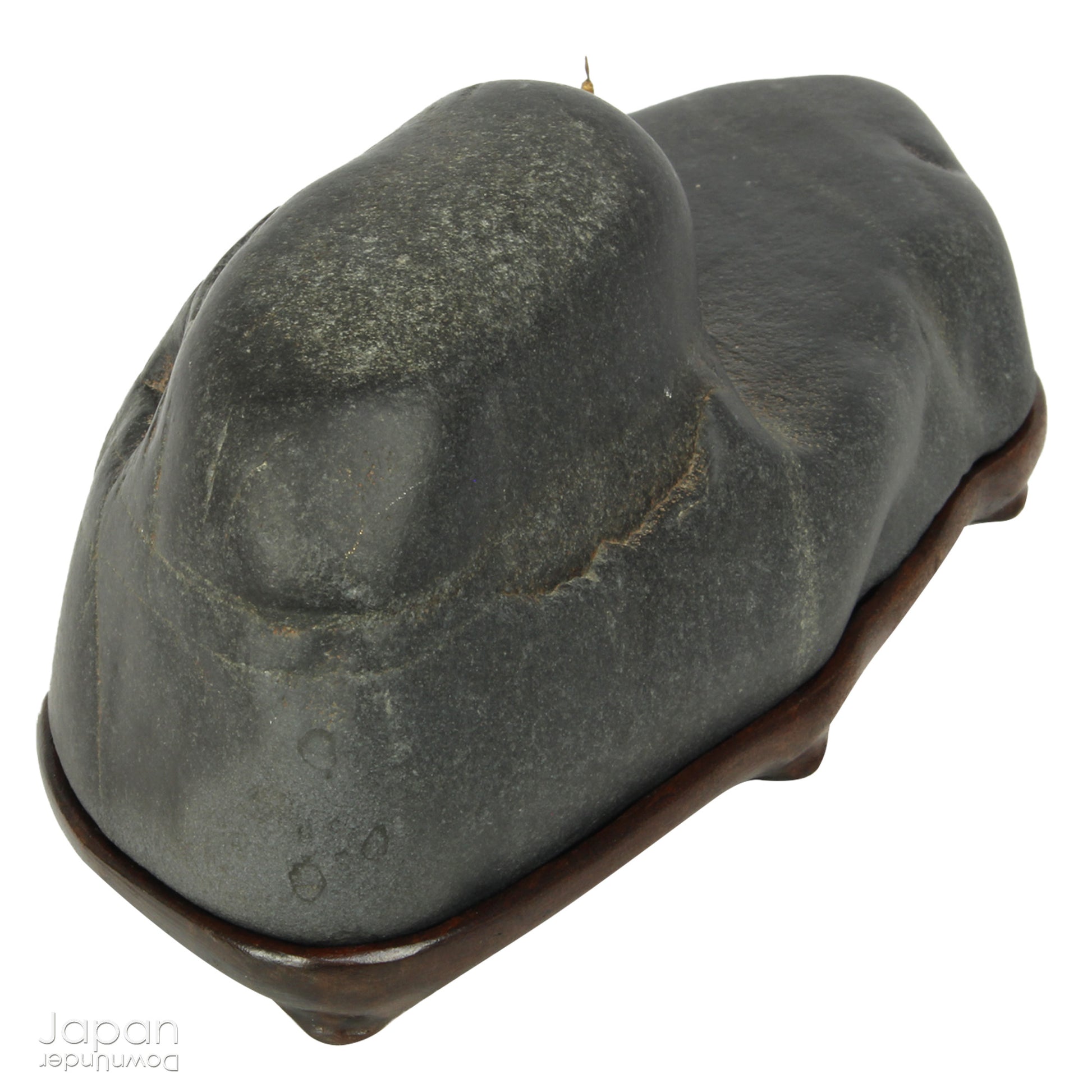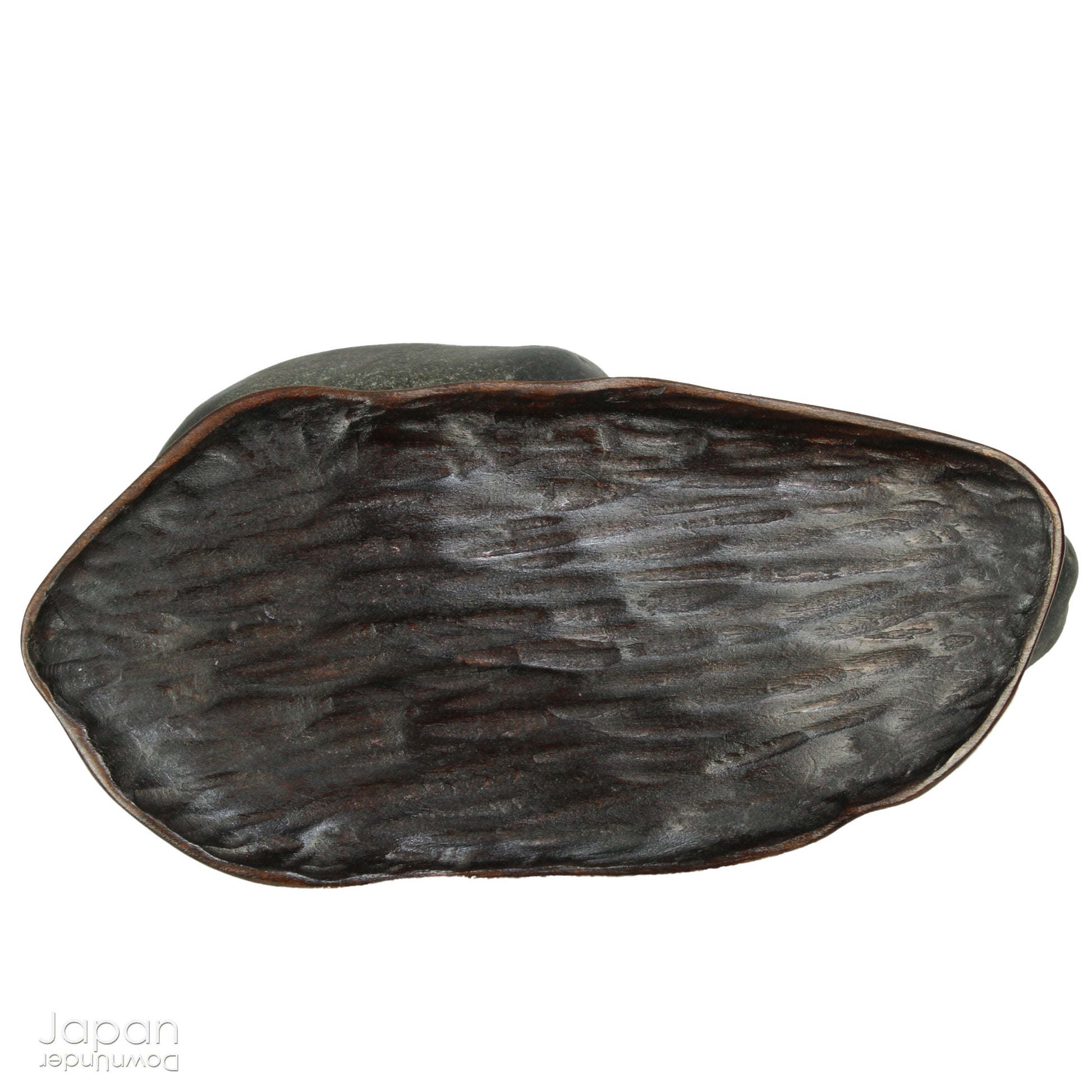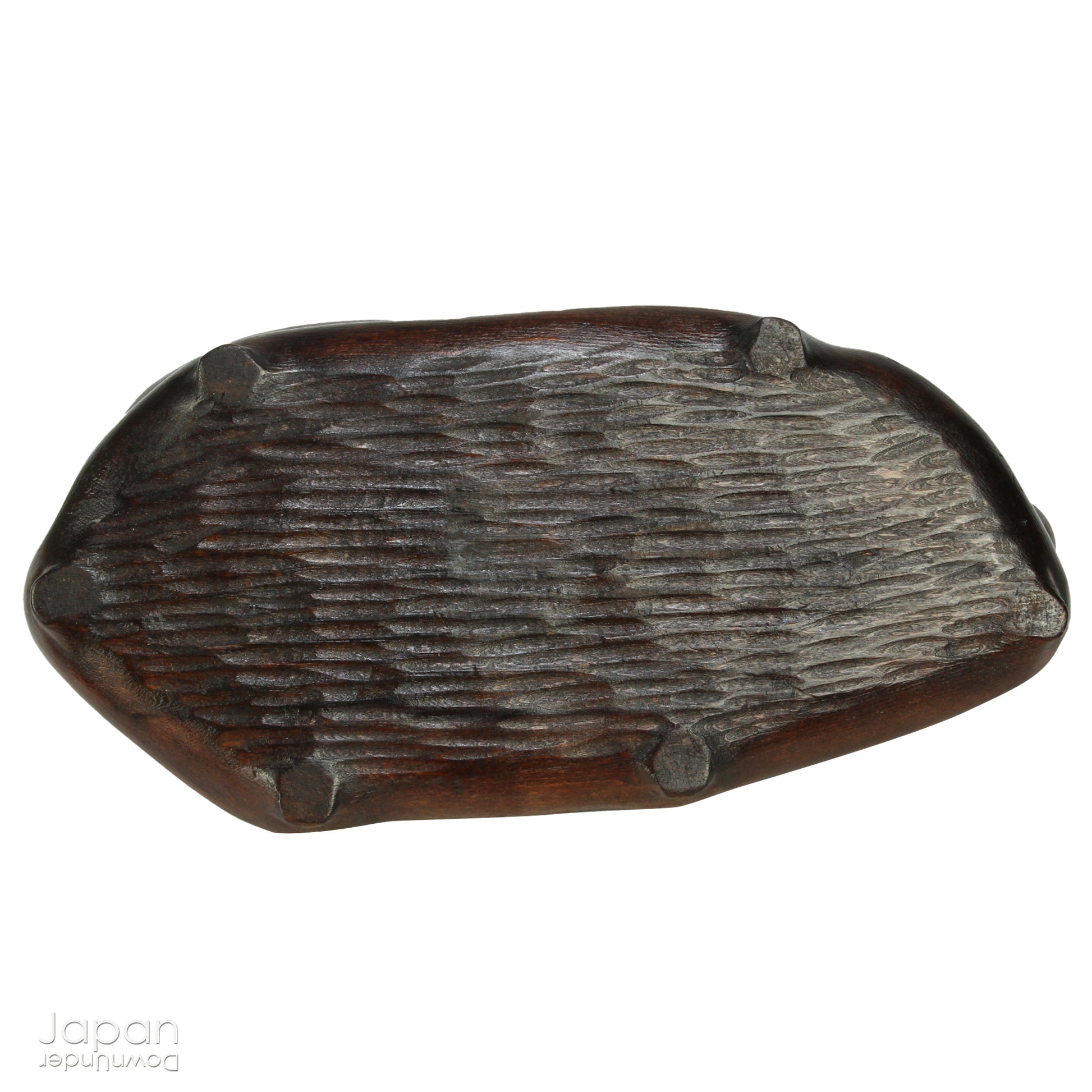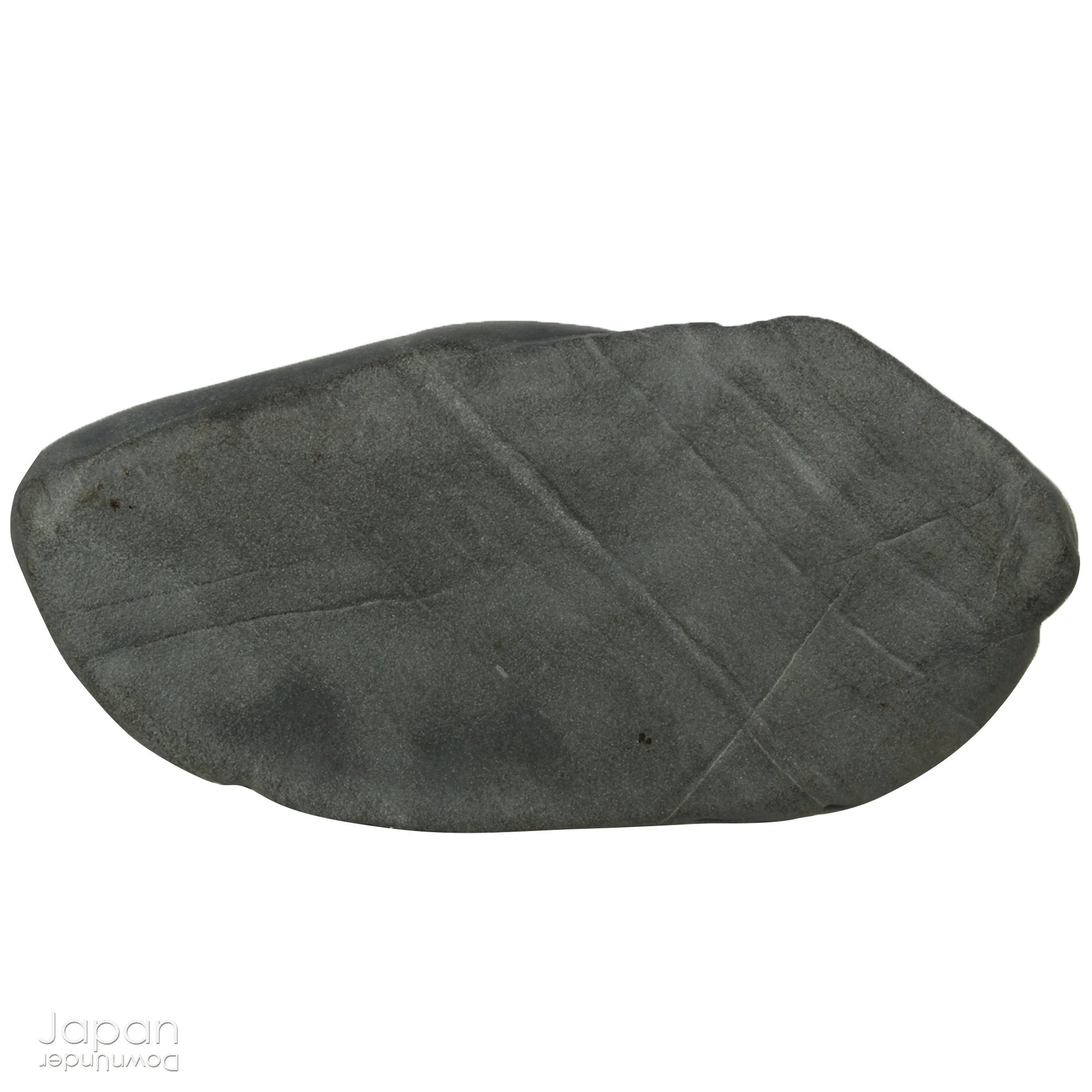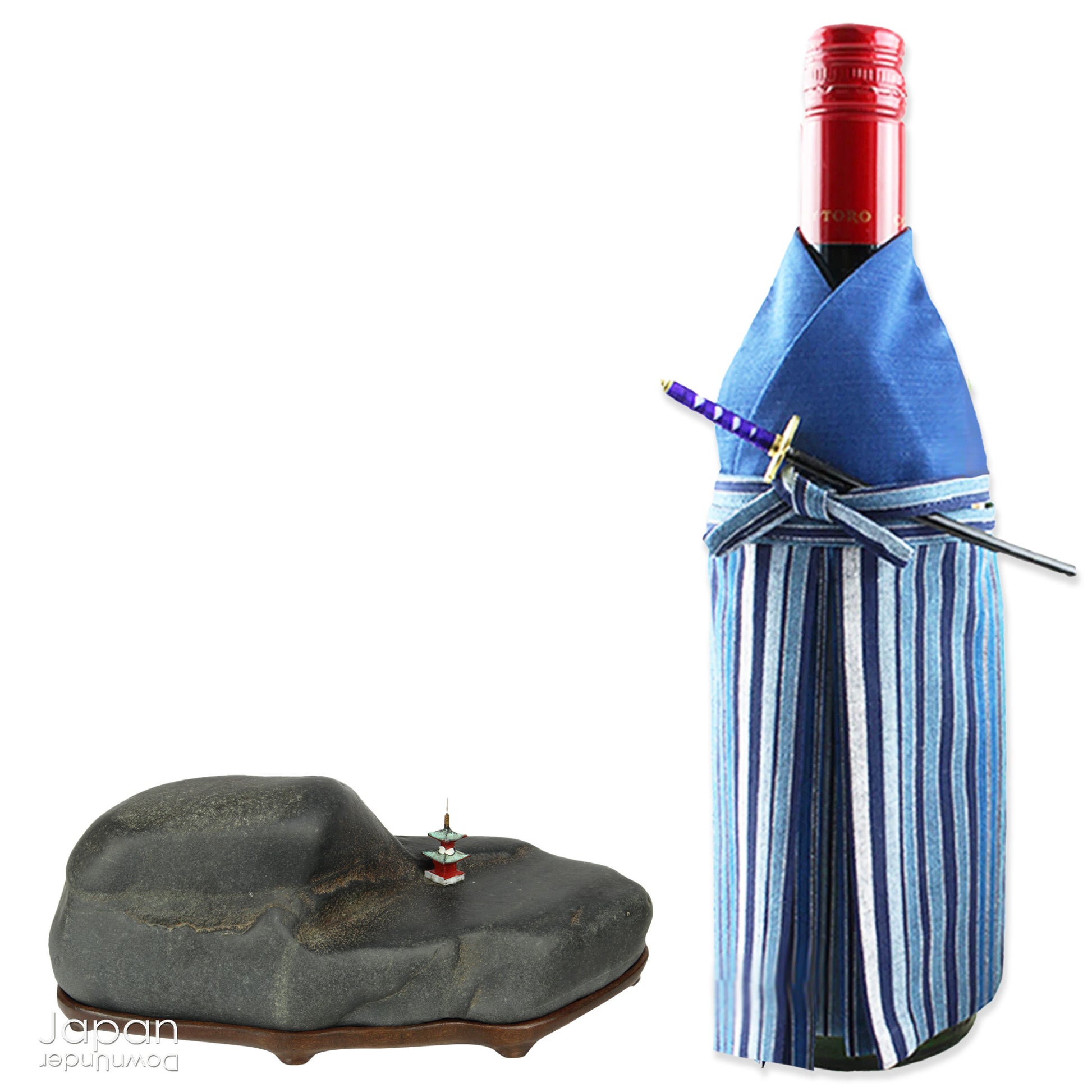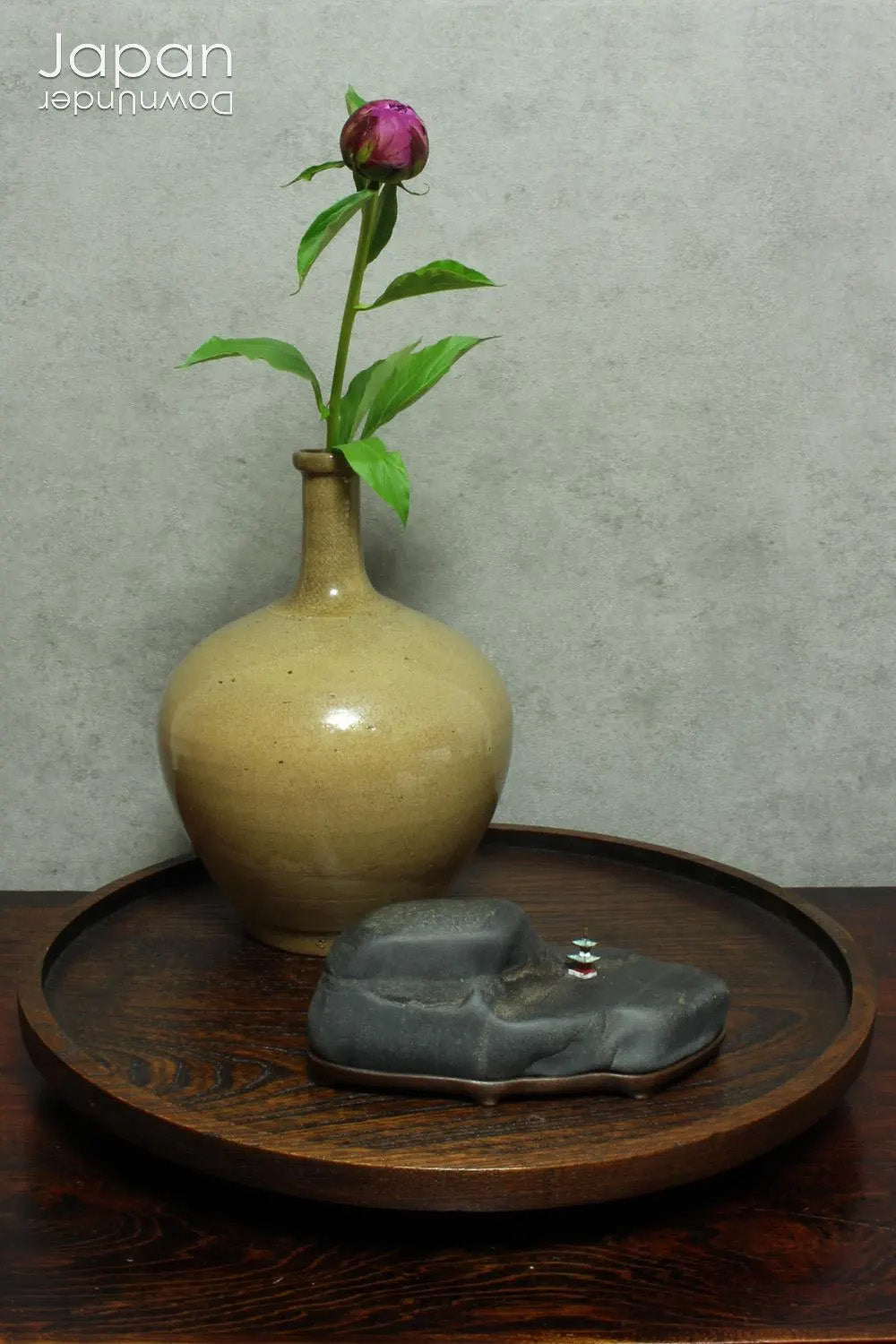JapanDownUnder
japanese suiseki viewing stone with pagoda on handcrafted wood stand - meditation and power stone
japanese suiseki viewing stone with pagoda on handcrafted wood stand - meditation and power stone
Couldn't load pickup availability
Love Japanese Style Like We Do
Introduce a quiet elegance and poetic depth to your space with this vintage Japanese suiseki - a contemplative stone shaped by nature and imbued with a serene, spiritual aura. Resting on a finely hand-carved daiza (wooden base) and accompanied by a small metal pagoda, this piece emanates stillness, balance, and an understated visual allure.
Rooted in the Japanese reverence for impermanence and simplicity, suiseki - literally “water stones” - are not merely found, but discovered. Formed over centuries by wind, water, and time, these stones are celebrated for the worlds they suggest: misty mountains, distant shorelines, hidden valleys. Each one is a natural poem in stone, inviting reflection, presence, and a quieting of the mind.
The inclusion of the diminutive pagoda is a nod to the traditional Japanese art of tenkei - the craft of creating miniature accessories specifically for suiseki displays. These finely detailed elements, used sparingly and with intention, lend a sense of scale and narrative to the composition. They help define the imagined landscape while adding a gentle playfulness to the viewing experience.
This particular vintage suiseki evokes the image of a vast mountain plateau, upon which the delicate, tiered pagoda rises in silent devotion. The stone’s gentle contours, smooth surface and subdued tones suggest a landscape weathered by the elements - enduring and serene. The presence of the pagoda offers a spiritual focal point, deepening the contemplative charm of the display. Cradled by a gracefully carved wooden base, the composition as a whole honors nature’s quiet majesty.
Living with suiseki is an invitation to pause and perceive more deeply. As light shifts across its surface and the seasons pass, the stone reveals new nuances - never static, always quietly unfolding. It offers no fixed meaning, only presence, becoming a lifelong companion in introspection.
Whether placed on a low tokonoma-style platform, integrated into a seasonal vignette, or displayed as a standalone sculpture, this suiseki brings a sense of timeless serenity and refined beauty to any interior. However you choose to enjoy it, it speaks softly of nature’s artistry - and of the stillness within.
- measures around 19 cm (7.5”) across x 8 cm (3.1”) tall x 9.5 cm (3.7”) deep.
- weighs 1,360 gm.
(listing for suiseki stone with pagoda on stand)
SHIPPING INFORMATION
- please read our shipping notes in shipping policy.
- we use recycle packaging wherever possible and wrap for safety, rather than appearance!
ABOUT OUR VINTAGE AND ANTIQUE ITEMS
We list pieces we feel are worthy of display. There may be scratches, dents, fading and signs of wear and tear. We try to explain the condition of each item exactly, but may miss something.
Information regarding the item and it’s age is obtained from dealers and our personal research. We do our best to give you the correct information but please be aware that we cannot guarantee this information.
Please message us prior to purchase with any questions you may have about our products.
SUISEKI - JAPANESE VIEWING STONES
Between 592-628 the Japanese Empress Regent Suiko received gifts of viewing stones from the Chinese Imperial Court. She liked them so much that she began the tradition of collecting stones in Japan. Viewing stones were also much admired by Samurai warriors who used them for meditation.
Japanese suiseki have a flat bottom and a best side for viewing. Chinese stones are often changed by cutting or drilling holes in the stone, or throwing them in a river for a decade. The Japanese have much stricter rules and all stones must be found in nature without being changed in anyway.
Traditional Japanese stones are classified into a variety of subject categories. There are rugged mountain ranges, mountain peaks from near and afar, snow capped mountains, mountains with waterfalls and lakes, mountain plateaus, coastal rocks with tunnels, human shapes, animal shapes, hut shapes and stones with pictures, to name a few.
Suiseki stones are placed on a daiza, suiban or doban. Daiza are carved wooden mounts that fit the base of the stone. Suiban (ceramic) and doban (copper) are waterproof, rectangular or oval trays, filled with sand. Mats, stands and tables are then used to display the suiseki to create a scene, often using mini bonsai. Bronze or ceramic miniature figures are sometimes used to enhance the theme of the scene and hanging scrolls or shikishi paintings are added to create a seasonal feel to the scene.
Small stands with asymmetrical shelves are also another option to display your suiseki along with other items of value. Miniature landscape suiseki, together with miniature bonsai, teapots, religious goods and small ornaments can create a beautiful living scene with various themes within the display.
After many hours of imagining a stone will reveal what is has to offer. The stone has stayed the same all this time, but the mind has been moved by this object. It is this feeling, one that will continue endlessly as we discover new dimensions to the stone, that brings our satisfaction in the appreciation of suiseki, nurturing our soul and heightening our love of nature and mankind.
TENKEI / TENPAI
In Japanese stone and bonsai displays, small accessories known as tenkei or tenpai are sometimes used to create a sense of scale and enhance the overall presentation. These miniature figures help define the scene and add an element of playfulness or imaginative depth to the viewing experience.
The use of tenkei in individual stone displays is primarily a Japanese tradition. The term itself is adapted from Japanese painting, where objects were often included in distant landscapes to emphasize the main subject. In suiseki (viewing stone) displays, tenkei typically range from 1 to 8 cm (0.4 to 3.1 inches) in size. When used with bonsai, the figures are usually two or more times larger. These objects can be placed directly on a stone or positioned adjacent to it.
The incorporation of tenkei into suiseki displays began during the Showa period, around 1925, and continues today. While porcelain, ceramic, and wooden figures are occasionally used, metal figures are by far the most common. The art of casting metal tenke - typically in copper, bronze, or silver - reached its peak in the early 1900s, using the intricate lost-wax casting technique. These figures never appear shiny or polished; instead, they are intentionally aged to suggest antiquity and depth.
A thoughtfully displayed Japanese stone accompanied by a tenkei can be deeply evocative. It invites interpretation and emotional reflection. For instance, imagine a stone presented in a glazed ceramic tray. Some viewers might see an island surrounded by water, while others may envision a rocky formation in a desert. Add a boat-shaped tenkei, and the scene becomes unmistakably aquatic. Replace it with a camel-shaped figure, and the same stone transforms into a desert landscape.
Today, authentic tenkei are rare and crafted by only a few artisans. As a result, they are highly valued and can command significant prices.
Share










